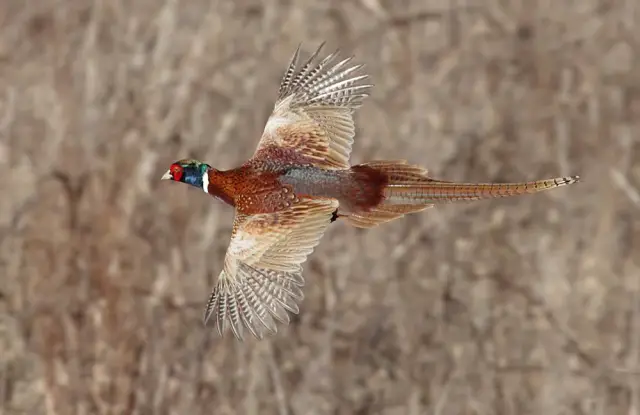


Upland Hunting with Jack O'Connor

The title may surprise you a bit as Jack O'Connor, the preeminent gunwriter of his day is often associated with trophy sheep hunting, quite correctly, and his lasting observations on the big game rifle and big game hunting. Not quite as strictly true is the O'Connor championing of the .270 Winchester and the Winchester Model 70. But what of upland hunting? Though not quite as topical as Shotgunning: The Art and Science by Bob Brister, Mr. O'Connor's common-sense, practical observations about upland hunting are refreshingly crisp compared to most of what is touted elsewhere. Jack O'Connor wrote often and thoroughly about upland hunting, with his The Shotgun Book of 1968 his most singular effort on the subject.
What is “upland hunting” anyway? Good question, as the word doesn't have much meaning. As O'Connor correctly notes, it covers a tremendous amount of ground. Anything that is isn't waterfowl hunting can be considered upland hunting. For many years, the rabbit was by far the most popular upland game animal, handily eclipsing all the shells expended for target sports. Today, the most shells expended award goes handily to the dove still dwarfing all target sports by no small margin.
Jack was happy to comment on why wingshooters generally stink it up so bad in the field: lack of practice. The fellows that can't bear to shoot at anything that doesn't have feathers and leaks blood are invariably sub-standard shots. Even those that might fancy themselves as gifted would be far, far more effective if they spent some time practicing. So it is with every sport that can be named, so wingshooting is hardly immune from the effects of lack of practice and lack of experience. Clay target games were all designed to help hunters become more effective in the field, originally-- all of them. Clay pigeons in trap displaced glass balls which, in turn, had displaced live birds. Skeet was designed for hunters, originally, as obviously was sporting clays.
Jack was quick to point up that the gauge of a shotgun doesn't mean much, dubbing the twenty gauge as the “Queen of the Uplands.” Gauge still doesn't matter much, but what does matter is sorely neglected and rarely talked about. It is range. Range is all the difference in the world. The complication is, upland hunting has no specific range. It could be a New England grouse at ten yards. It could be pass-shooting at dove at 55 yards and everything in-between. That's well all the notions of gauge, choke, and shot size get complicated, as no one really knows what in the world is being referred to when someone says they want a shotgun “for upland.” It could be spruce grouse in the timber, a dove at 60 yards, a dove at 15 yards, a turkey at 30 yards, or a rabbit at 25 yards. It could be a pheasant over pointing dogs at 15 yards or it could be a nervous, wary pheasant jumping and cackling at 45 yards. It is everything from a four ounce dove to a thirty pound turkey, with every increment in-between. This is, of course, a wonderful prescription for confusion reigning supreme, as rarely does anyone know what the other is talking about.
You'll hear this constantly. What's a good load and choke for doves? Oh, you'll get advice, as in “I use a modified” but it has no foundation. The starting point is the ranges that you expect the pellets to hit the bird, without that primer there can be no rational discussion. You might be in a blind near a waterhole for very slow, close range work, you might be standing in a wheat field taking what comes, or you might be jump-shooting out of sunflowers. Who knows? Only the individual. Most of us don't pay great attention to range, but we should. A rangefinder has long humbled me, but more importantly is a constant training aid. If we don't get a grasp of ranges, we are often just making hulls.
Jack O'Connor ordered his custom Model 21 twenty gauge in 1955, embraced three inch shells even back then, and felt that three inch shells made “a real duck gun” out of the twenty. Jack also wrote glowingly of the Federal Cartridge 1 oz. 28 gauge load introduced in the 1950s, that made a immensely practical pheasant gun out of the 28 gauge at 30-35 yards. Jack's observations about barrel length were a bit ahead of its time, as he wrote that most upland pumps and autos would be far better handling guns with 23-24 inch barrels, and he preferred 25-26 inch barrels on his doubles as well with a nod to the Churchill 25 inch light twelves. One of the most unusual thoughts from Jack O'Connor is where he felt the center of the pattern should be on upland guns: one foot high at 40 yards. That's not universally held today, by any means, but Jack felt it was ideal for flushing game, as you can hold right on a flushing quail or pheasant and “nail it,” as Jack wrote.
As is customary with many of the O'Connor literary efforts, he offered no absolutes, no hard, fast, exact rules as tremendously varied game, distances, and conditions just don't allow for them. What Jack O'Connor did communicate very well was the importance of considering range as paramount and tantamount, letting your firearm, ammunition, and choking choices all flow from that. Also included was the gentle, but constant O'Connor admonition to practice, practice and then go practice. All sensible considerations as you'd universally expect from America's greatest gunwriter.
Copyright 2010 by Randy Wakeman. All Rights Reserved.

Custom Search



